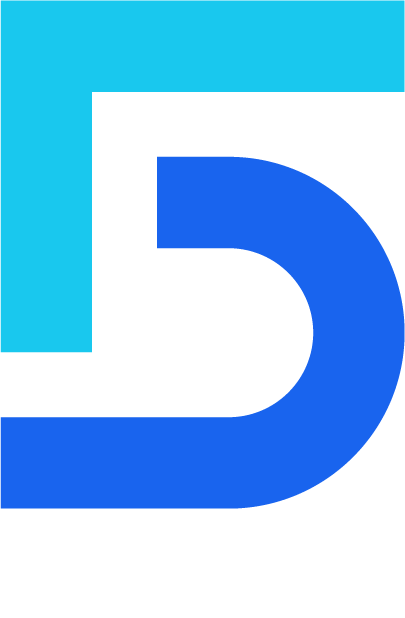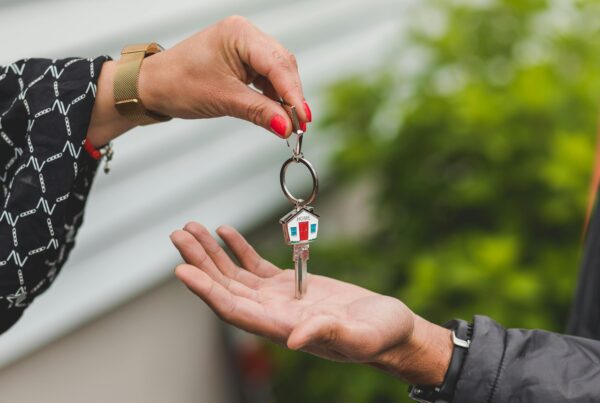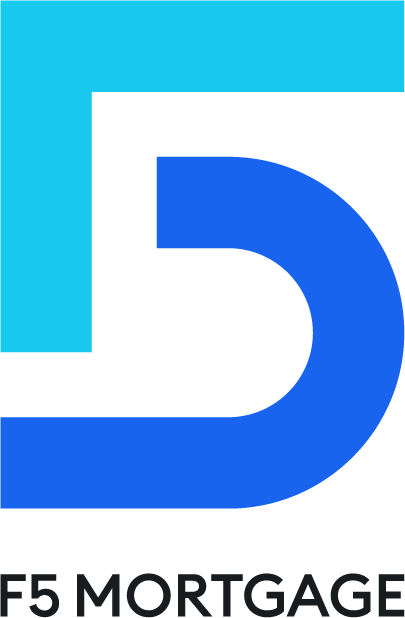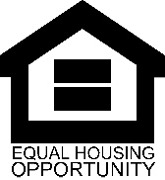A high mortgage interest rate can hinder your ability to save money, particularly during the initial years of getting your finances in order.
Thankfully, there’s a way to enjoy lower monthly payments during the first few years of your home mortgage — a temporary buydown, also known as a 3-2-1 buydown.
The lower payments can be helpful if you struggle to pay the upfront costs of the mortgage loan and need time to afford the typical monthly payment, but you must also consider the downsides before pursuing a 3-2-1- buydown.
What Is a 3-2-1 Buydown Mortgage?
A 3-2-1 buydown is a mortgage financing technique that provides a temporarily reduced interest rate during the first three years of the loan. It’s available for many loan types, including VA loans, though not every lender will provide this option.
Essentially, it’s an agreement between you and a mortgage lender to temporarily lower your interest rate during an initial buydown period of three years. The lender charges 3% less during the first year of the loan term, 2% less during the second year, and 1% less during the third year.
When the buydown period ends in the fourth year, the borrower pays the full rate for the rest of the life of the loan.
How Much Does a 3-2-1 Buydown Cost?
While it may seem like a 3-2-1 buydown translates to long-term savings, the reality is that the lender will charge a significant amount of fees.
This will not be a concern if someone else is paying for your interest rate reduction, but if you’re pursuing a buydown yourself, you will want to think carefully about whether you can afford the upfront costs.
Most of the time, the fees for the interest rate buydown are comparable to the money you save on your monthly mortgage payments.
For example, if you were expecting to pay $8,500 less in house payments, you can expect that the fees for the interest rate buydown will be almost the exact amount of the savings.
Buyers are often better off making higher down payments to reduce the principal or paying points for a long-term lower interest rate than relying on a buydown.
3-2-1 Buydown Example
Assume you buy a house with a purchase price of $350,000 with a 10% down payment, so your principal loan amount is $315,000. Your normal interest rate is 6.5%, your yearly property taxes are $6,000, and your yearly homeowners insurance is $1,000.
During the first year, your interest rate would be 3.5%, and your monthly payments would be $2,165.
In the second year, your interest rate is 4.5%. Your monthly payments are approximately $2,242.
With an interest rate of 5.5% in the final year of the interest rate buydown, you’ll be paying $2,361.
And, finally, in the fourth year, you are making the same mortgage payments you will during the rest of the loan term — $2,573.
Who Pays for a 3-2-1 Buydown?
3-2-1 buydown costs are typically paid by someone other than the buyer, such as the seller, builder, or lender.
Motivated sellers may finance a mortgage buydown to entice buyers with lower mortgage rates, while a home builder may recognize that higher interest rates can scare off buyers and scuttle their sales.
When the average market interest rate is quite high, lenders might offer temporarily reduced interest rates, knowing that they’ll enjoy profit over the life of the loan.
Pros and Cons of a 3-2-1 Buydown
A temporary buydown can be a good tool in certain circumstances, particularly when someone else is paying for the mortgage cost reduction.
However, there are potential downfalls that you must consider carefully before you decide to use a buydown.
Pros
For younger buyers with great negotiation skills who can persuade a seller to help them achieve lower monthly payments, there are numerous benefits, such as:
Money for other expenses
You can use the savings to build up a strong nest egg or invest in other ventures.
Helpful with budgeting
You’ll be able to predict when your rates will rise and prepare for this eventuality.
Advantageous for younger buyers
If you’re just starting out in your career and expect an income increase soon, you can afford a nicer house that can be easily financed when you start making more money.
Cons
While lower monthly payments sound like a dream for every home buyer, you need to consider the total cost of this mortgage technique, as it’s not quite as simple as it appears on the surface. Possible problems include:
Overbuying
While you may believe you and your partner will have higher incomes in only a few years, life is unpredictable. If you’re still making the same as when you bought the house, but your mortgage payments are now hundreds of dollars more, you may find yourself in foreclosure.
Jump in payments
You need to be prepared for the higher mortgage rate and cut back on other expenses to afford it so you’re not stuck with sticker shock.
Upfront costs
A 3-2-1 buydown has very high fees at the beginning of the term, which means that buyers are not saving that much during the initial years.
If a seller is paying for the mortgage buydown, then you may find it a more advantageous option, but if you’re thinking of financing this option yourself, there are better options available to reduce your initial payments.
3-2-1 Buydown vs. Adjustable Rate Mortgage
The best mortgage option for you depends on your specific circumstances, such as how long you intend to stay in your home and what types of enticements you have gained from the seller.
A 3-2-1 buydown mortgage means that you have a fixed “step down” during the first three years: 3%, then 2%, then 1%. On the other hand, an adjustable-rate mortgage means you have a low initial mortgage rate that then equalizes to the market rate after a certain period of time. Both involve a period where the interest rate is reduced, but the amount of reduction may differ.
Adjustable-rate mortgages (ARMs) often have lower introductory rates than a buydown, and their fixed-rate period may be longer, even as high as ten years.
There is also a lifetime cap, basically a “ceiling” of how high your rate can go. You’ll have plenty of notice as to when your rate will increase so that you can plan ahead for the increased payments.
Our adjustable-rate loans are an excellent option for those buying starter homes and young professionals who expect to develop a high income by the end of the lower-term period.
They are also an excellent choice for those who intend to pay off their mortgage quickly, such as buying an inexpensive home and owning it outright within a decade.
If you do not intend to stay in your current property for the long term — for example, if you want to start a family sometime in the future and know you’ll need more room — then an ARM can be an excellent option. You’ll have a beautiful home to enjoy now, then be prepared to move once you’re ready.
The flexibility of ARMs helps you save money over time so that you can afford the home of your dreams now, especially as they do not have the same high fees as a temporary buydown.
Should You Get a 3-2-1 Buydown?
A 3-2-1 buydown is a good option in very specific situations, particularly for real estate investors.
Mortgage interest rates are much higher for investment loans, as are the down payment and closing costs, so any way that an investor can free money for their business will be incredibly helpful.
They may also be helpful for those who are excellent negotiators and can win concessions from sellers, builders, or lenders.
The average homeowner, especially younger buyers, will generally find an ARM to be a better option, as they have longer introductory rates and lower upfront fees.
The Bottom Line
A 3-2-1 mortgage buydown is an enticement that enables buyers to pay lower interest rates at the beginning of their loan, with a sharp rate increase at the end of the third year.
While they can be useful tools, they may also lull buyers into purchasing more homes than they can afford, thus putting them at risk of foreclosure.
In many instances, particularly for those who want to pay their home off quickly or move within a decade, an adjustable-rate mortgage is a better option, as the introductory period is longer.
F5 Mortage provides affordable mortgage options for buyers and expert advice on navigating the home-buying process. We offer fixed-rate, adjustable-rate, VA, FHA, and even investor loans and refinancing on many different loan types.
If you’re ready to begin your home-buying journey, contact us to get a free quote and personalized advice about your many mortgage options. We’d be happy to help you explore your choices at any stage of home ownership, whether it’s a reverse mortgage or cash-out refinance.
3-2-1 Buydown FAQs
Can you refinance during a 3-2-1 buydown?
Yes, you can refinance during the buydown period, as long as you would qualify under other circumstances.
This can be a good option if rates have fluctuated dramatically during that introductory period, but it may not be worth the hassle if there is only a slight reduction in mortgage rates.
Are 3-2-1 buydowns available for all types of mortgages?
A 3-2-1 buydown is not available for every home loan. Some lenders use an interest rate buydown to entice buyers, especially in times of high interest rates. Others have different programs, such as paying discount points or adjustable-rate mortgages, that function similarly but remain in place for the entire life of the loan.
Home buyers who are considering this introductory lower interest rate should talk to their lender to ensure they are getting the right mortgage for their needs.
What is the difference between 3-2-1 and 2-1 buydown?
The difference between a 3-2-1 buydown and a 2-1 buydown is the length of time that the interest rate is reduced. For the first option, you’ll enjoy lower monthly mortgage payments for three years, while the latter only reduces the monthly mortgage payment for two years.
A 3-2-1 buydown also reduces interest rates one more percentage point — 3% rather than just 2% during the initial period.
Is a 3-2-1 buydown mortgage a good deal?
If you’re paying for the buydown yourself, then you would be better served by an adjustable-rate mortgage. However, if another party is using it as an enticement, you may find it a useful tool in order to save cash at the start of your loan.
Just because someone offers a buydown does not mean you have to take the offer, so be sure to run the numbers and identify whether you will be able to afford the higher rate down the line.
Most of the time, real estate investors are better able to leverage a 3-2-1 buydown, raising the capital necessary to finance the rate increase. The typical homeowner should consider talking to a lending expert to review their options before pursuing this option.









I don’t think the title of your article matches the content lol. Just kidding, mainly because I had some doubts after reading the article.